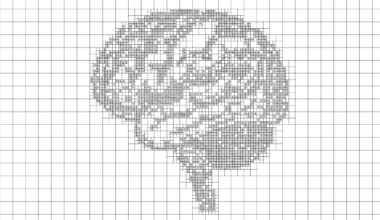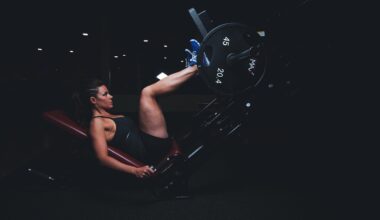Improving Ankle Flexibility: Exercises for Dancers
Ankle flexibility is crucial for dancers to achieve graceful and fluid movements. The ankle joints bear the weight during performances and must allow for a wide range of motion. Proper flexibility helps prevent injuries while enhancing overall performance in various dance styles. Dancers often utilize different types of stretching exercises to improve their ankle flexibility and mobility. Incorporating various techniques allows dancers to target specific areas, facilitating better control over their movements. Furthermore, dancers should focus on both passive and active stretches in their training regimen. Passive stretches involve holding a position with assistance, while active stretches utilize the dancer’s strength to push their limits. Additionally, warming up properly is essential before engaging in stretching exercises. A solid warm-up routine increases blood flow, making muscles more pliable and ready to stretch. Consistent practice and dedication to flexibility training yield significant improvements over time. Therefore, dancers need to adopt a holistic approach to refine their skills. This includes not only ankle flexibility but overall physical health, technique, and artistry in performance to flourish as artists in their respective dance disciplines.
Effective ankle flexibility exercises range widely, and dancers should engage in a variety to see the best results. One popular exercise is the ankle circles, where dancers rotate their feet in a circular motion, both clockwise and counterclockwise. This movement increases mobility and range by working through the full range of motion of the ankle joint. Another effective exercise is the calf stretch, where dancers stand facing a wall, place one foot back and push the heel down while bending the front knee. This stretch targets the calf muscles, promoting better ankle flexibility. Furthermore, dancers can perform resistance band stretches, using the band to gently pull their toes toward them, effectively stretching the calf and Achilles tendon. Maintaining consistency is key—performing these stretches daily can lead to substantial progress. Additionally, strengthening the muscles around the ankle through specific exercises can provide better support and flexibility. Including strength training in the routine benefits overall physical stability. As with any training method, it’s essential to listen to your body and avoid pushing too hard to avert injury. Practicing these exercises regularly will promote healthy and agile ankles for dancers.
The Role of Warm-Up and Cool-Down
Before starting ankle flexibility exercises, a proper warm-up session is essential to prepare the body and joints for movement. Warming up increases blood flow to the muscles, gradually reducing the risk of injuries. Simple activities like light jogging or skipping can effectively warm up the body. After warming up, dancers can incorporate dynamic stretches as part of their routine, which focuses on moving through various ranges of motion. High knees, butt kicks, and leg swings are effective and engaging dynamic stretches that can prepare the ankles for more intensive flexibility training. After performing ankle exercises, a cool-down phase is equally important. Dancers should engage in static stretching to help relax the muscles and improve flexibility. Stretching the calves and surrounding muscles following the exercises enables the body to recover while reinforcing the progress made during the session. Cool-down stretches lengthen the muscles and promote better circulation, reducing tension built during training. Dancers should allocate sufficient time to both the warm-up and cool-down phases to maximize benefits and effectiveness of their flexibility workout. This comprehensive approach fosters a balanced routine, supporting injury prevention and encouraging personal growth in practice.
The benefits of enhanced ankle flexibility extend beyond dance performance, impacting overall health and well-being. Improved flexibility contributes to better posture, increased coordination, and overall body awareness, which are vital for dancers. A flexible dancer can execute intricate movements, maintain balance, and transition smoothly between poses. Additionally, flexibility training can alleviate muscle tightness and discomfort commonly experienced in dancers. Most importantly, it plays an essential role in injury prevention. Ensuring that the ankles are strong and flexible allows dancers to execute fast, dynamic movements while minimizing the risk of strains and sprains. Additionally, regular flexibility training can also reduce soreness and speed up recovery times after intense performances or rehearsals. Dancers who prioritize flexibility training often find themselves more confident in their abilities, enhancing their overall stage presence. Moreover, emphasizing ankle flexibility can provide competitive advantages in various dance styles from ballet to hip-hop. Flexibility not only enhances individual performance but impacts the group dynamics in ensemble performances, allowing for cohesiveness and synchronization. Prioritizing ankle flexibility training ensures dancers possess the necessary attributes to excel in their craft and take their performance to the next level.
Incorporating Ankle Flexibility into Dance Classes
Dance instructors play a pivotal role in promoting ankle flexibility among their students. Incorporating ankle flexibility exercises into regular classes can greatly enhance students’ skills. Teachers can dedicate a portion of class time to specific warm-ups and stretch routines that target the ankle joint. By integrating flexibility training into lessons, instructors can help instill the importance of consistent practice among dancers. This practice encourages students to take their flexibility journey seriously, as mastering ankle mobility is essential for dance success. Instructors can also encourage students to perform flexibility exercises as part of their warm-up regime whenever they rehearse outside class sessions. Creating flexibility challenges and goals for students makes the process engaging, motivating them to strive for improvement. Including guided stretching sessions in choreography can be beneficial, as it allows students to see direct applications of flexibility techniques. Additionally, instructors should foster an environment where students feel comfortable expressing their struggles and progress. Cultivating this open dialogue contributes to a stronger learning experience and creates motivated dancers excited about their growth. By giving flexibility the focus it deserves, instructors will undoubtedly produce more agile and skilled performers.
Adopting a variety of ankle flexibility exercises is essential for dancers to maintain motivation and engagement in their routine. Having several options allows dancers to find what works best for them and keeps their training interesting. Additionally, different exercises target different muscle groups surrounding the ankle, leading to a well-rounded flexibility program. For those with different levels of flexibility or physical limitations, modifications can be incorporated, ensuring that all dancers can participate. Flexibility training should not be one-size-fits-all, as the needs and capabilities of each dancer can vary greatly. Incorporating props like yoga blocks or straps can further assist in performing a variety of exercises, enabling additional support during stretches. Dancers can also benefit from tracking their progress with a journal or app, documenting their flexibility journey while celebrating milestones. Setting short-term and long-term flexibility goals can help maintain motivation, providing dancers with a clear focus for their training. Celebrating small victories not only boosts morale but reinforces the value of consistent effort. Ultimately, a customizable and varied approach to ankle flexibility will foster resilience and adaptability in a dancer’s career, contributing positively to their growth and performance.
Final Thoughts on Ankle Flexibility for Dancers
Improving ankle flexibility requires dedication, patience, and a structured routine that encompasses various exercises and techniques. In the quest for flexibility, it’s vital to maintain consistent practice while being mindful of one’s body limits. Dancers should remember that improvement is often gradual and can vary from one person to another. Additionally, resting and allowing the body to recover are key components of a successful flexibility regimen. Taking breaks prevents overuse injuries and keeps dancers feeling fresh and prepared for performance. Involving peers or instructors in the flexibility journey creates accountability and community support that benefits everyone involved. Sharing experiences can motivate dancers to push themselves further while helping each other reach their goals. Therefore, cultivating a positive environment of encouragement should be encouraged within dance settings. Lastly, integrating flexibility training into regular dance practice solidifies the foundation for a dancer’s functional skills. The more dancers pay attention to and enhance their ankle flexibility, the more proficient and confident they will become in their craft. Thus, dancers should prioritize their training while embracing the transformative journey towards optimal ankle flexibility and overall artistic expression.
Wrapping up, ankle flexibility is an essential component for dancers aiming for excellence in performance. By incorporating structured exercises along with mindful warm-ups and cool-downs, dancers can make significant strides in their ankle mobility. The benefits extend beyond performance; they cultivate overall body awareness and injury prevention. Dancers are encouraged to explore various exercises, keeping their routines fresh and motivating, while also seeking out guidance from instructors. Ultimately, this commitment to flexibility training fosters personal growth and encourages dancers to become versatile performers. Being adaptable in one’s training allows dancers to thrive while pursuing various dance styles, amplifying their abilities to execute complex movements with ease. Incorporating flexibility exercises into daily routines ensures dancers build the resilience necessary for high-intensity rehearsals and performances. With flexibility serving as the foundation for all dance techniques, every dancer benefits by prioritizing ankle flexibility as part of their overall training regimen. As dancers strive to improve, they must pay attention to their individual needs and adjust their approaches accordingly. Armed with knowledge, techniques, and a positive mindset, dancers will undoubtedly flourish in their artistic endeavors, showcasing their enhanced skills for years to come.


